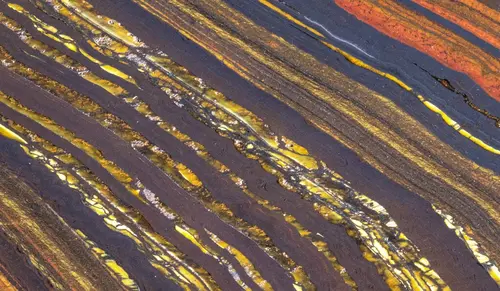
Insights & Outcomes welcomes the start of summer break with an honor for a Yale applied mathematician, a protein that multitasks, new insights into some colorful sediments, and a new way to study a key area of the human brain.
As always, you can find more science and medicine research news on Yale News’ Science & Technology and Health & Medicine pages.
Bands of gold — and orange, yellow, and brown
A project that began as a collaboration among researchers in Yale’s Department of Earth & Planetary Sciences may cause scientists to rethink Earth’s banded iron formations — colorful layers of sedimentary rock made of iron oxides.
In a study in Nature Geoscience, Jay Ague, the Henry Barnard Davis Memorial Professor of Earth & Planetary Sciences, and former Yale researchers Duncan Keller (now a faculty member at Rice University), Santiago Tassara (now at Bernardo O’Higgins University in Chile), and Leslie Robbins (now with the University of Regina in Canada) have linked banded iron formations with some of the planet’s most fundamental geophysical processes, from volcanism and plate tectonics to the development of photosynthetic life.
The authors posit that heavy, banded iron formations — formed in ancient oceans — plunged into Earth’s mantle layer over time and sank deep enough to settle near the top of the Earth’s core. This process may have aided in the formation of mantle plumes — narrow belts of heated rock at the boundary of the mantle and core — which can lead to powerful volcanic activity at Earth’s surface.
“If what’s happening in the early oceans after microorganisms chemically change surficial environments ultimately creates an enormous outpouring of lava somewhere else on Earth 250 million years later, that’s much greater length scale processes talking to each other that were previously thought of as unrelated,” said Keller, who is first author of the study.
Rajdeep Dasgupta, a professor of Earth Systems Science at Rice, and Cin-Ty Lee, a professor of geology, Earth, environmental, and planetary sciences at Rice, are co-authors of the study.